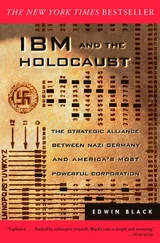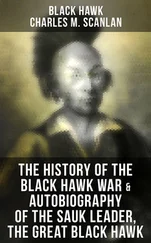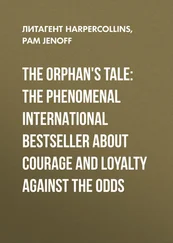Edwin Black - War Against the Weak
Здесь есть возможность читать онлайн «Edwin Black - War Against the Weak» весь текст электронной книги совершенно бесплатно (целиком полную версию без сокращений). В некоторых случаях можно слушать аудио, скачать через торрент в формате fb2 и присутствует краткое содержание. Город: Washington, DC, Год выпуска: 2012, ISBN: 2012, Издательство: Dialog Press, Жанр: История, на английском языке. Описание произведения, (предисловие) а так же отзывы посетителей доступны на портале библиотеки ЛибКат.
- Название:War Against the Weak
- Автор:
- Издательство:Dialog Press
- Жанр:
- Год:2012
- Город:Washington, DC
- ISBN:1-56858-258-7
- Рейтинг книги:3 / 5. Голосов: 2
-
Избранное:Добавить в избранное
- Отзывы:
-
Ваша оценка:
- 60
- 1
- 2
- 3
- 4
- 5
War Against the Weak: краткое содержание, описание и аннотация
Предлагаем к чтению аннотацию, описание, краткое содержание или предисловие (зависит от того, что написал сам автор книги «War Against the Weak»). Если вы не нашли необходимую информацию о книге — напишите в комментариях, мы постараемся отыскать её.
War Against the Weak — читать онлайн бесплатно полную книгу (весь текст) целиком
Ниже представлен текст книги, разбитый по страницам. Система сохранения места последней прочитанной страницы, позволяет с удобством читать онлайн бесплатно книгу «War Against the Weak», без необходимости каждый раз заново искать на чём Вы остановились. Поставьте закладку, и сможете в любой момент перейти на страницу, на которой закончили чтение.
Интервал:
Закладка:
The son of simple mountain peasants, Mendel was not socially adept. Combative exchanges with those in authority made him prefer solitude. “He who does not know how to be alone is not at peace with himself,” he wrote. Originally, he had hoped to devote himself to the natural sciences. But he failed at the university and retreated to an Augustinian monastery in Brno, Moravia. There, while tending the gardens, he continued the work of a long line of students of plant hybridization. 16
Mendel preferred peas. Peering through flimsy wire-rim glasses into short tubular microscopes and scribbling copious notes, Mendel studied over ten thousand cross-fertilized pea plants. Key differences in their traits could be predicted, depending upon whether he bred tall plants with short plants, or plants yielding smooth pods with plants yielding wrinkled pods. Eventually, he identified certain governing inheritable traits, which he called “dominating” and “recessive.” These could be expressed in mathematical equations, or traced in a simple genealogical chart filled with line-linked N's and B’s . Among his many conclusions: when pea plants with wrinkled skins were crossed with plants yielding smooth skins, the trait for wrinkled skin dominated. 17In other words, the smooth pea pod skin was corrupted by wrinkled stock. Wrinkled peapods ultimately became a powerful image to those who found the human simile compelling.
Mendel’s scientific paper, describing ten years of tedious work, was presented to a local scientific society in Brno and mailed to several prominent biologists in Europe, but it was ignored by the scientific world. Mendel grew more unhappy with the rejection. His combative exchanges with local officials on unrelated issues were so embarrassing to the order that when Mendel died in 1884, the monastery burned all his notes. 18
In May of 1900, however, the esteemed British naturalist and Darwin disciple William Bateson unexpectedly discovered references to Mendel’s laws of heredity in three separate papers. The three papers were independently researched and simultaneously submitted by three different students. Amazed at Mendel’s findings, an excited Bateson announced to the world through the Royal Horticultural Society that he had “rediscovered” Mendel’s crucial studies in plant heredity. The science that Bateson called genetics was born. Mendel’s laws became widely discussed throughout the horticultural world. 19
But Galton’s eugenic followers understood that the biological arithmetic of peapods, cattle and other lower species did not ordain the futures of the most complex organism on earth: Homo sapiens. Height, hair color, eye color and other physical attributes could be partially explained in Mendelian terms. But intelligent, thought-driven humans beings were too subtle, too impressionable, too variable and too unpredictable to be reduced to a horticultural equation. Man’s environment and living conditions were inherent to his development. Nutrition, prenatal and childhood circumstances, disease, injury, and upbringing itself were all decisive, albeit not completely understood, factors that intervened in the development of any individual. Some of the best people came from the worst homes, and some of the worst people came from the best homes.
Hence, during the first decade of the twentieth century, as Mendel was being debated, most Galtonian eugenicists admitted that their ideas were still too scantily clad to be called science, too steeped in simple statistics rather than astute medical knowledge, too preliminary to even venture into the far-reaching enterprise of organized human breeding. Eugenics was all just theory and guesswork anyway. For example, in 1904 Galton wrote to his colleague Bateson seeking any initial evidence of “Mendelianism in Man,” suggesting that any data could contribute to what he still called a “theoretical point of view.” In another 1904 letter, Galton reminded Bateson, “I do indeed fervently hope that exact knowledge may be gradually attained and established beyond question, and I wish you and your collaborators all success in your attempts to obtain it.” 20
As late as 1910, Galton’s most important disciple, mathematician Karl Pearson, head of the Eugenics Laboratory, admitted just how thin their knowledge was. In a scientific paper treating eugenics and alcoholism, Pearson confessed, “The writers of this paper are fully conscious of the slenderness of their data; they have themselves stated that many of their conclusions are probabilities… rather than demonstrations. They will no doubt be upbraided with publishing anything at all, either on the ground that what they are dealing with is ‘crude and worthless material’ or that as ‘mathematical outsiders,’ they are incapable of dealing with a medico-social problem.” Pearson added in a footnote that he also understood why some would find the linkage of eugenics and alcoholism an act of inebriation in itself. He went on to quote a critic: “The educated man and the scientist is as prone as any other to become the victim… of his prejudices…. He will in defense thereof make shipwreck of both the facts of science and the methods of science… by perpetrating every form of fallacy, inaccuracy and distortion.” 21
Galton himself dismissed the whole notion of human breeding as socially impossible-with or without the elusive data he craved. “We can’t mate men and women as we please, like cocks and hens,” Galton quipped to Bateson in 1904. At the time, Galton was defending his recently published Index to Achievements of Near Kinfolk, which detailed how talent and skill run in the same celebrated families. Wary of being viewed as an advocate of human breeding, Galton’s preface cautioned Mendelian devotees with strong conditionals, ifs and buts. “The experience gained in establishing improved breeds of domestic animals and plants,” he wrote, “is a safe guide to speculations on the theoretical possibility of establishing improved breeds of the human race. It is not intended to enter here into such speculations but to emphasize the undoubted fact that members of gifted families are… more likely… to produce gifted offspring.” 22
Nor did Galton believe regulated marriages were a realistic proposition in any democratic society. He knew that “human nature would never brook interference with the freedom of marriage,” and admitted as much publicly. In his published memoir, he recounted his original error in suggesting such utopian marriages. “I was too much disposed to think of marriage under some regulation,” he conceded, “and not enough of the effects of self-interest and of social and religious sentiment.” 23
Unable to achieve a level of scientific certainty needed to create a legal eugenic framework in Britain, Galton hoped to recast eugenics as a religious doctrine governing marriages, a creed to be taken on faith without proof. Indeed, faith without proof constitutes the essence of much religious dogma. Eugenical marriage should be “strictly enforced as a religious duty, as the Levirate law ever was,” wrote Galton in a long essay, which listed such precedents in the Jewish, Christian and even primitive traditions. He greeted the idea of a religion enthusiastically, suggesting, “It is easy to let the imagination run wild on the supposition of a whole-hearted acceptance of eugenics as a national religion.” 24
Many of Galton’s followers agreed that founding a national religion was the only way eugenics could thrive. Even the playwright George Bernard Shaw, a eugenic extremist, agreed in a 1905 essay that “nothing but a eugenic religion can save our civilization.” Late in his life, in 1909, Galton declared that eugenics in a civilized nation would succeed only as “one of its religious tenets.” 25
Читать дальшеИнтервал:
Закладка:
Похожие книги на «War Against the Weak»
Представляем Вашему вниманию похожие книги на «War Against the Weak» списком для выбора. Мы отобрали схожую по названию и смыслу литературу в надежде предоставить читателям больше вариантов отыскать новые, интересные, ещё непрочитанные произведения.
Обсуждение, отзывы о книге «War Against the Weak» и просто собственные мнения читателей. Оставьте ваши комментарии, напишите, что Вы думаете о произведении, его смысле или главных героях. Укажите что конкретно понравилось, а что нет, и почему Вы так считаете.












